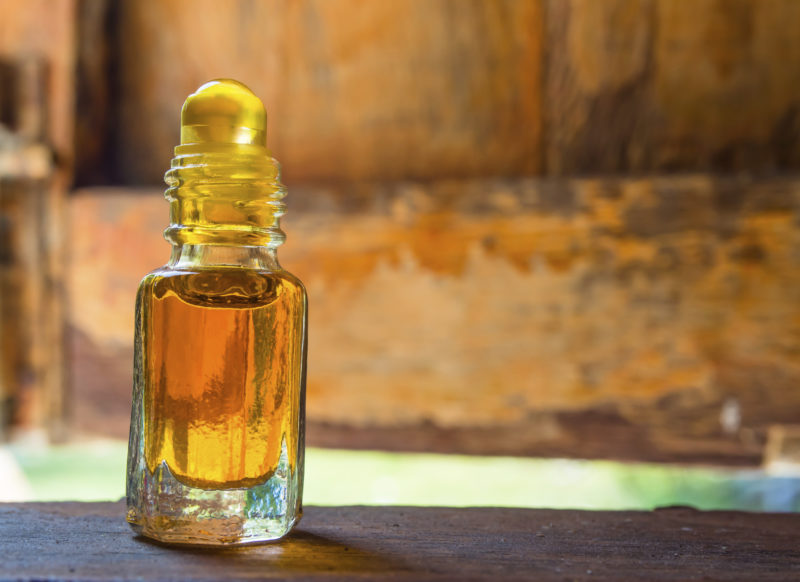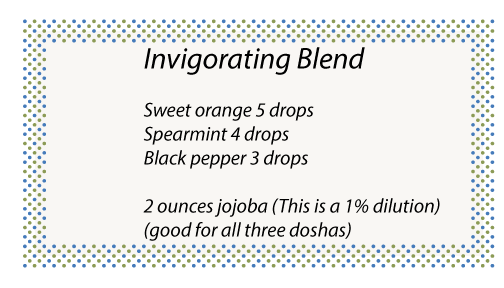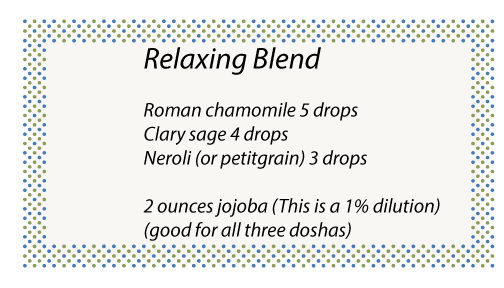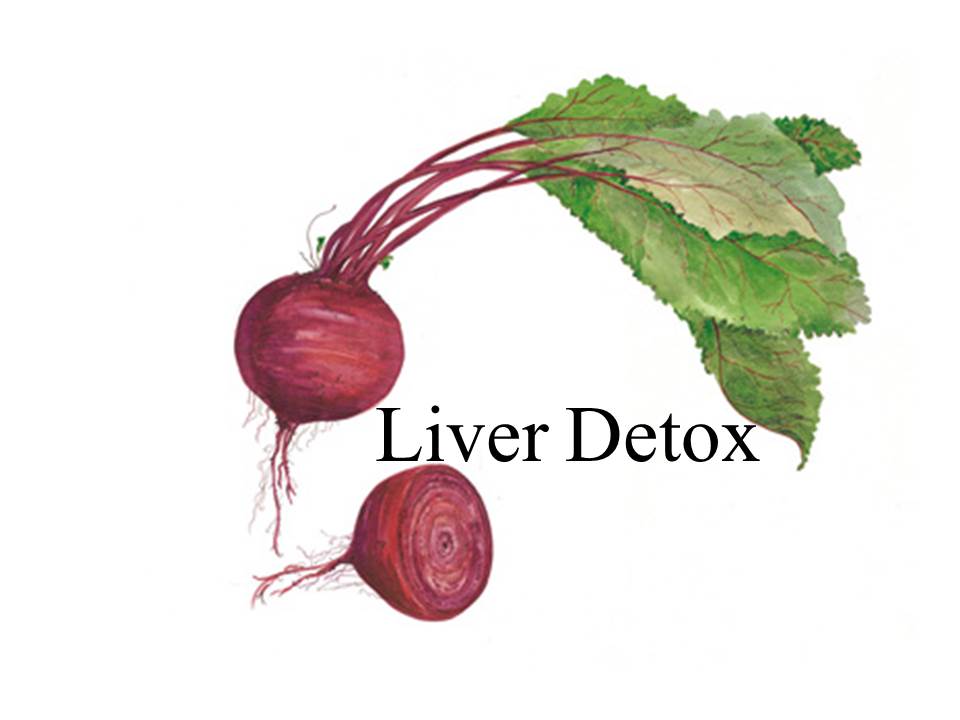
by Leslie Moldenauer | | Body, Cleansing
The Silent Killer Hiding Behind Productivity: Chronic Stress and Burnout
You pride yourself on getting things done, crossing off items on that endless to-do list, and holding everyone else together. But at what cost? Chronic stress is breaking you down, and the very productivity you’re glorifying is eroding your health—bit by bit. Women are conditioned to push until there’s nothing left, but if you don’t stop to listen to your body’s whispers, those whispers will become screams.
Let’s break the cycle.
Why Women Are Trapped in the Productivity Cycle
From a young age, many women are taught that their worth is tied to how much they do for others. We are praised for multitasking, for “having it all,” and for sacrificing ourselves to keep things running smoothly. We internalize this, believing that rest equals laziness and asking for help is a sign of failure. Going back eight years ago, this was me, and now I have seen others do it to the point of illness.
Psychologically, this cycle is driven by:
- Perfectionism: The belief that if you don’t do it yourself, it won’t be done right.
- Fear of Judgment: Worry that others will think less of you if you take a break or set boundaries.
- Unmet Needs: Over time, this leads to resentment when help is not freely offered, even though we don’t ask clearly or consistently for it.
We end up projecting our frustration onto others. We become bitter when people fail to notice how much we’re carrying when in reality, we’ve conditioned them to believe we have everything under control.
The Whispers Your Body Is Sending You
Before chronic stress and burnout become a full-blown crisis, your body sends subtle warnings. These signs are often ignored because they don’t seem “serious enough”—until they are.
- Fatigue: That deep exhaustion no amount of sleep can cure.
- Brain Fog: Difficulty focusing, forgetfulness, and mental sluggishness.
- Irritability and Anxiety: Feeling constantly on edge or emotionally reactive.
- Digestive Issues: Bloating, discomfort, or unpredictable digestion linked to chronic stress.
- Hormonal Imbalances: Irregular cycles, increased PMS symptoms, or low libido.
- Muscle Tension and Pain: Chronic tightness in the neck, shoulders, or lower back.
Ignoring these symptoms can lead to adrenal fatigue, autoimmune issues, and long-term hormonal disruptions.
What You Can Do to Break the Cycle
Here’s where transformation begins. It’s not about adding more tasks to your plate but shifting your mindset and daily habits. There are a lot of ideas here, be sure to bookmark for later.
Find Radical Compassion for Yourself
- Acknowledge Your Efforts: Recognize that you are doing your best. You are enough.
- Rewrite the Narrative: Your worth is not tied to productivity. You deserve rest and joy, simply because you exist.
- Forgive Yourself: Stop shaming yourself for needing a break or asking for help.
Practice:
- Create a daily affirmation like, “Rest is a gift I give myself. I deserve peace and balance.”
Redefine Success
- Start each day by identifying one priority that aligns with your long-term well-being.
- Replace to-do lists with “to-be” lists—focus on how you want to feel, not what you need to accomplish.
Fuel Your Brain and Body
Stress depletes essential nutrients, so replenishing them is key to recovery.
- Adrenal Support:
- Focus on foods rich in B vitamins, magnesium, and vitamin C, such as leafy greens, avocados, and citrus fruits.
- Incorporate adaptogenic herbs like ashwagandha and rhodiola to regulate cortisol.
- Brain Fuel:
- Eat healthy fats such as omega-3s (salmon, chia seeds, walnuts) to support cognitive function. Look into mushroom supplements, ideally the fruiting body to maximize your brain health.
- Stay hydrated and avoid excess caffeine, which stresses your adrenal glands.
Create Restorative Rituals
- Morning Check-in: Spend 5-10 minutes journaling or meditating before diving into your day.
- Mid-Day Pause: Take a 5-minute break to breathe deeply and stretch.
- Evening Wind-Down: Turn off electronics an hour before bed and engage in calming activities like reading or gentle stretching.
Reconnect with Your Body
When chronic stress and burnout take over, it disconnects you from your body’s natural rhythms and instincts. Reconnection doesn’t require drastic measures—just small, mindful actions that remind your nervous system it’s safe to rest and heal.
Here are unique, actionable steps you can take today:
Anchor Yourself with a “Body Check-In Ritual”
Set a timer for three times a day (morning, midday, and evening). When the timer goes off:
- Close your eyes and take a deep breath.
- Ask yourself, “What does my body need right now?”
- Is it water? A stretch? Deep rest?
- Scan your body from head to toe. Notice any tension (jaw, shoulders, stomach, hips) and intentionally soften those areas as you exhale.
This practice cultivates awareness and builds trust between your mind and body.
Engage in 4-7-8 Breathing to Calm Your Nervous System
This simple breathwork technique coined by Dr. Andrew Weil is powerful for resetting your body’s stress response.
- Inhale deeply for 4 seconds through your nose.
- Hold the breath for 7 seconds.
- Exhale slowly through your mouth for 8 seconds.
- Repeat 3-5 times.
This practice activates the parasympathetic nervous system, signaling your body to shift out of “fight or flight” mode. It’s especially helpful during moments of overwhelm or before sleep.
Try Sensory Grounding with Nature Elements
If you’re feeling disconnected and anxious, reawaken your senses by immersing yourself in nature. If you can’t get outside, use items at home.
Steps:
- Touch natural textures: Hold a leaf, shell, or crystal. Feel its temperature and texture.
- Focus on your surroundings: Listen for distant sounds (wind, birds) and near ones (your breath).
- Smell essential oils like lavender, rosemary, or pine to evoke calming feelings.
- Visualize yourself rooted like a tree, with energy from the earth stabilizing you.
This technique helps bring you into the present moment, countering anxious thoughts.
Reclaim Your Energy with the “Release and Refill” Method
When you’re carrying stress, tension builds in your muscles, and energy gets stuck. This method involves two steps:
Step 1 – Release:
- Stand up and shake your body gently for 60 seconds. Focus on areas where tension is trapped (shoulders, neck, lower back).
- Imagine releasing the stress with each movement, like shedding heavy layers.
Step 2 – Refill:
- Place your hand on your heart. Take a slow, deep breath and say, “I am safe. I am enough.”
- Visualize filling yourself with golden light or a wave of calm energy that nourishes every cell in your body.
This exercise helps you release emotional tension and recharge your system.
Practice Intuitive Movement
Rather than forcing structured exercise, give your body permission to move how it wants to.
Steps:
- Play calming or rhythmic music.
- Let your body lead—sway, stretch, or dance freely without judgment.
- Focus on how the movement feels rather than how it looks.
This practice fosters body awareness and helps you express emotions physically, especially when words aren’t enough.
The Heart-Mind Connection Exercise

When stress keeps you in your head, this exercise helps reconnect your thoughts and emotions with your physical body.
Steps:
- Sit quietly and place one hand on your heart and the other on your stomach.
- Take 3 deep breaths and silently say, “I am here. I am listening.”
- Ask your heart, “What message do you have for me today?”
- Be patient and notice any feelings, memories, or intuitive nudges that arise.
This reflective practice helps you tap into your inner wisdom, fostering trust in yourself.
Create a Rest Ritual with Weighted Pressure
Weighted pressure on the body can help calm an overactive nervous system.
Steps:
- Use a weighted blanket or place a heavy object (like a warm towel) across your chest and shoulders while lying down.
- Focus on slow breathing and feel the sensation of pressure grounding you.
This can be deeply comforting and help reduce anxiety, especially before bed.
Stimulate Your Vagus Nerve with Cold Exposure
The vagus nerve is critical for regulating your body’s stress response. Activating it helps reduce inflammation and improve emotional resilience.
Steps:
- Splash cold water on your face for 20-30 seconds or take a cold shower rinse at the end of your shower.
- Breathe deeply through the sensation of cold to strengthen your nervous system’s recovery.
This practice trains your body to handle stress more efficiently.
Set Micro-Boundaries to Prevent Overwhelm
Many women feel disconnected from their bodies because they’re constantly overextended. Start small by setting “micro-boundaries” each day.
Examples:
- Say no to one non-essential task.
- Pause notifications on your phone for one hour.
- Take a mini-break every two hours, even if it’s just to breathe or stretch.
These small acts of self-protection build your capacity to prioritize your well-being.
Reclaim Your Sense of Play and Wonder
Chronic stress kills creativity and joy. Reconnect with your inner child by engaging in activities that spark curiosity and fun.
Ideas:
- Create art, doodle, or paint without aiming for perfection.
- Spend time stargazing or cloud-watching.
- Laugh—watch a funny video or call someone who lifts your spirits.
Play helps shift your nervous system from survival to thriving, where healing and restoration can occur.
Your body is always speaking to you, guiding you back to balance. It’s time to start listening—not with judgment, but with compassion. These practices may seem simple, but their impact is profound. Each small act of self-connection builds the foundation for deep healing and resilience.
You are not broken. You are capable of incredible transformation. ✨
Your Journey from Healing to Thriving
You’ve read this far because something inside you is ready to shift—ready to let go of survival mode and embrace a life of balance, joy, and deep connection. My Healing to Thriving Workbook is designed to guide you through that transformation.
Through gentle practices, journaling prompts, and soulful rituals, you’ll reconnect with your inner wisdom, rebuild your resilience, and nurture radical self-compassion. This isn’t about doing more—it’s about rediscovering the version of you who already has the power to thrive.
You are not alone on this journey. Healing starts with one step. ✨
The Lost Art of Breathing: Why Have we Forgotten?
Reference
Jungmann M, Vencatachellum S, Van Ryckeghem D, Vögele C. Effects of Cold Stimulation on Cardiac-Vagal Activation in Healthy Participants: Randomized Controlled Trial. JMIR Form Res. 2018 Oct 9;2(2):e10257. doi: 10.2196/10257. PMID: 30684416; PMCID: PMC6334714.

by Leslie Moldenauer | | Cleansing
Did you know that the air in your home could be more polluted than the air outside? It’s true, and it’s a serious concern. According to the EPA, indoor air contains 2 to 5 times more contaminants than outdoor air. Indoor air pollution is one of the most serious environmental threats to your health, yet no agency can regulate it, and few studies have been done about its effects. The urgency to address this issue cannot be overstated—your health and well-being depend on it.
Why Is Our Indoor Air So Toxic?
Every single piece of furniture, carpet, and shower curtain in your home is outgassing. Outgassing releases chemicals into the air, including potentially hazardous VOCs (Volatile Organic Compounds). The synthetic wood, glue, fabric, vinyl, and cushioning in your home evaporate various gases. Common home VOCs include aldehydes, alcohols, plasticizers, aromatics, alkanes, toxic fire retardants, and formaldehyde.
Steps to Improve Indoor Air Quality
- Use Zero VOC Paint: While adding color pigments introduces some VOCs, zero VOC paint reduces overall emissions.
- Choose Real Wood Furniture: Avoid MDF (Medium-Density Fiberboard) products that off-gas more VOCs.
- Opt for Organic Mattresses: Considering you spend about a third of your life on your mattress, choose organic to avoid exposure to chemicals and flame retardants.
Invest in a Quality HEPA Air Filter
A HEPA air filter can remove pet dander, dust mites, pollen, and smoke pollutants. However, HEPA filters don’t address outgassing from furniture and other household items. Here are the links to the units we use in our home, which have great reviews.
Germ Guardian Air Purifier
Levoit Air Purifier
Combat Outgassing with Houseplants
Many houseplants act as natural air purifiers. Here are my top recommendations:
- English Ivy
- Benefits: Absorbs formaldehyde, the most prevalent indoor pollutant.
- Concerns: It is not safe for pets or children. Keep it out of reach and clean up fallen leaves immediately.
- Peace Lily
- Benefits: Rids the air of benzene, a carcinogen.
- Concerns: Not safe for pets.
- Lady Palm
- Benefits: Targets ammonia in the home.
- Concerns: Safe for pets.
- Boston Fern
- Benefits: Absorbs formaldehyde, benzene, trichloroethylene, xylene, and toluene.
- Concerns: Requires high humidity and moisture.
- Snake Plant
- Benefits: Lowers carbon dioxide, formaldehyde, and benzene.
- Concerns: Not safe for pets.
- Spider Plant
- Benefits: Filters formaldehyde, xylene, and toluene from the air.
- Concerns: Needs direct light and plenty of water.
Beyond Plants: Clean Air Purifiers and Cleaner Cleaning Products
Clean Air Purifiers
- Invest in air purifiers that use activated carbon or charcoal filters to capture VOCs and other gaseous pollutants.
Cleaner Cleaning Products
- Choose cleaning products free from ammonia, chlorine, and other harsh chemicals. Look for eco-friendly certifications to ensure they are non-toxic and safe for your home.
Beware of Greenwashing
Greenwashing is the practice of companies making misleading claims about the environmental benefits of their products to appeal to eco-conscious consumers. This deceptive marketing tactic can make it challenging to identify genuinely eco-friendly products. To avoid falling victim to greenwashing, it’s essential to understand the signs and how to verify the legitimacy of green claims.
Common Signs of Greenwashing:
- Vague Claims: Phrases like “eco-friendly,” “natural,” or “green” without specific details can be misleading. Always look for precise information about how a product is environmentally friendly.
- Irrelevant Claims: Some products boast about being free from certain harmful substances that are never in that category.
- False Labels: Some companies create “green” labels to give an impression of third-party certification.
- Hidden Trade-offs: A product might claim to be eco-friendly in one aspect but overlook significant environmental harms in another.
- Exaggerated Claims: Watch out for overstated benefits that sound too good to be true without supporting evidence.
How to Verify Eco-Friendly Claims:
- Look for Third-Party Certifications: Reputable certifications like USDA Organic, Fair Trade, Green Seal, and Energy Star indicate that a product has met rigorous environmental standards.
- Research the Company: Investigate the company’s overall environmental practices. Companies genuinely committed to sustainability will often have transparent policies and reports on their environmental impact.
- Read Ingredient Lists: For cleaning products and personal care items, check the ingredients to ensure they are free from harmful chemicals.
- Check for Transparency: Companies that are truly eco-friendly will provide detailed information about their sustainability practices and the specific benefits of their products.
The Hidden Dangers of Indoor Air Pollution
The air inside our homes can harbor a variety of toxins that pose serious health risks. From respiratory issues to long-term chronic illnesses, indoor air quality can significantly impact our well-being. Here are some alarming facts:
- Volatile Organic Compounds (VOCs): VOCs, which are found in paints, varnishes, and cleaning products, can cause headaches, dizziness, and respiratory problems.
- Formaldehyde: Emitted from furniture, flooring, and textiles, formaldehyde is a known carcinogen.
- Particulate Matter: Dust, pollen, and pet dander can trigger allergies and asthma attacks.
- Mold and Mildew: High humidity levels can lead to mold growth, which can cause respiratory issues and other health problems.
Importance of Water Filtration
Clean water is just as crucial as clean air for maintaining a healthy home environment. Unfortunately, tap water can contain various contaminants, including chlorine, lead, pesticides, and other harmful substances. Investing in a sound water filtration system can help ensure that the water you and your family consume is safe and healthy.
Types of Water Filtration Systems
- Activated Carbon Filters
- Benefits: Removes chlorine, sediment, volatile organic compounds (VOCs), and improves taste and odor.
- Concerns: It may not remove heavy metals, nitrates, or microbes.
- Reverse Osmosis (RO) Systems
- Benefits: It is effective at removing a wide range of contaminants, including lead, fluoride, nitrates, and pesticides.
- Concerns: This can be wasteful, as the process uses significant water.
- UV Filters
- Benefits: Kills bacteria and viruses.
- Concerns: It does not remove chemical contaminants.
- Ceramic Filters
- Benefits: Removes bacteria, sediment, and protozoa.
- Concerns: It may not remove chemical contaminants or viruses.
- Whole House Filtration Systems
- Benefits: Filters water at the point of entry, ensuring clean water throughout the entire house.
- Concerns: It can be expensive and may require professional installation.
My Recommendations
After extensive research, combining different filtration methods can provide the best results. The product I used (Berkey) did not have the best testing results with its filters. Luckily, other companies create universal filters that fit into the housing, so I replaced the filter.
Waterdrop Alkaline Water Filter
Waterdrop Fluoride Filters
Key Takeaways
- Test Your Water: Before choosing a filtration system, test your water to identify specific contaminants present.
- Choose Certified Products: Look for filters certified by reputable organizations like NSF International to ensure they meet quality standards.
- Regular Maintenance: Maintain and replace filters as recommended to ensure continued effectiveness.
Varify Complete Water Test Kit
Investing in a quality water filtration system is essential to creating a healthier home environment. Clean air and clean water form the foundation of a healthy living space.
Improving indoor air quality is crucial for maintaining a healthy living environment. By incorporating houseplants, investing in air purifiers, using cleaner cleaning products, and being aware of greenwashing, you can significantly reduce the pollutants in your home. Take action today to ensure a safer and healthier indoor space for you and your loved ones.
References
- Introduction to Indoor Air
- Having a Bad Air Day? Improve Your Indoor Air Quality
- 10 Surprising Sources of Off-Gassing in Your Home, and What You Should Do About It
- Indoor Air Pollution: An Evaluation of Three Agents
- Benzene
- Which Cleaning Products Contain Ammonia?
- Ferns, Clean Air, & NASA
- Snake Plant, Everything You Need to Know
- NASA Clean Air Study
- Water Quality and Filtration
Disclaimer
The links to specific products contained herein are affiliate links. I may earn a commission at no additional cost if you purchase through these links. Rest assured, these recommendations are based on my vetted experience and commitment to providing valuable, trustworthy information for a healthier home.

by Leslie Moldenauer | | Body, Cleansing, Essential Oils
Abhyanga, or annointing yourself from head to toe with warmed oil, is an ancient form of self-love, and is a beautiful practice to do every day for well-being and �longevity. �
Depending on the type of oil you use, you will likely want to do this before a shower. Your blend will also dictate whether you use it before you start your day-invigorating, or before bed-for restful sleep.
There is not “one” way to accomplish the goal. This daily �practice is said to balance the dosha’s in Ayurveda, and keep you incredibly grounded in the present.� (Link below for more details on the doshas)
“The body of one who uses oil massage regularly does not become affected much even if subjected to accidental injuries, or strenuous work. By using oil massage daily, a person is endowed with pleasant touch, trimmed body parts and becomes strong, charming and least affected by old age”
Charaka Samhita Vol. 1, V: 88-89 (One of the Great ancient texts of Ayurveda)
Make sure you are in a warm, comfortable space. If you enjoy a piece of music, now would be a good time to play it. You “can” run the diffuser, but since you are making up a massage oil blend, it is not necessary. Do not leave any body part out.
Move slowly with �intention in circular strokes, chopping motions, whatever feels good. Do not make this a mindless practice, stay present and �feel all there is to feel.


***As I am not aware of your medical condition, please be sure to research the oils listed to make sure they do not have any contraindications for you.
Click here for more self-care tips incorporating mind body balance and aromatherapy.
References:
Benefits of Abhyanga
Understanding the Doshas
Please note that I am not a medical practitioner. The content of this website is provided for general informational purposes only and is not intended as, nor should it be considered a substitute for, professional medical advice. Do not use the information on this website for diagnosing or treating any medical or health condition. If you have or suspect you have a medical problem, promptly contact your professional healthcare provider. By using this website, you assume full responsibility and liability for your own actions.


by Leslie Moldenauer | | Body, Cleansing
The liver is THE hard-working organ in the human body and the second largest; the first being our skin. It performs many functions that are vital to life. The liver is responsible for hundreds of processes in the body; yes you read that right! By far the most important function is that of detoxification.
The liver is one of the most important organs in the body when it comes to detoxifying toxins, but not the only one. The liver converts fat soluble toxins into water soluble substances that can be excreted in the urine or the bile. Many of the toxic chemicals that we encounter in our environment, food, beauty products, etc. are fat-soluble, which means they dissolve only in fatty or oily solutions and not in water. This makes them difficult for the body to excrete. What happens if they are not excreted in a timely manner from the body? They are stored…sometimes for YEARS only to be released during times of intense exercise, extreme stress or juice/water fasting. During the release of these toxins, several symptoms such as: headaches, poor memory, stomach pain, nausea, fatigue, dizziness and palpitations can occur.
In addition to the role of detoxifier; the liver also plays an important role in:
- Cleansing your blood and returning it to the heart
- The liver stores glucose when it is in excess after you eat and releases that glucose in the blood when needed. This is an important function which when impaired during liver disease, results in hypoglycemia (low blood glucose).
- Liver plays important role in hormonal modification and inactivation. Liver stagnation may cause hormonal imbalances, particularly excess estrogen.
- Most drugs are metabolized by the liver.
IF the liver is overloaded with toxins and unable to function at optimal levels, “liver stagnation” can result in:
- Abdominal bloating
- Anxiety
- Irritability
- Menstrual disorders
- PMS disorders
- Stress disorders
- Chronic fatigue
- Inability to lose weight
- Sensitivity to chemicals
So what can you do?
The first step is to remove or reduce exposure to toxic food and drink:
- Alcohol
- Preservatives
- Dyes
- Pesticides and Fertilizers
- Heavy metal in large fish – stick to wild caught salmon
- Contaminated water – invest in a filtration unit
- Chlorinated and brominated products (found in almost all commercially produced breads and bread products)
- Switch to non-toxic and plant-based, cleaning and personal care products such as vinegar, lemon juice and essential oils
- Your skin is the largest organ of your body so do not put anything on your body that you would not put in your body

The second step is to pay attention to what you do eat:
- Eliminate processed foods, simple carbohydrates and sugar. A good motto is “Do not eat from a box.”
- Focus on eating more organic produce.
- Eliminate toxic, poor quality fats like canola oil, soybean oil, corn oil.
- AVOID GMO’s. Do not eat animal products from animals fed genetically modified feed such as soy, corn, and wheat.
- Eat the rainbow of fruits and vegetables every day. Aim for a minimum of 60% of your daily intake of food to be raw.
Let’s talk some specifics….
Lemon juice
The juice of half a lemon in hot water first thing in the morning is a perfect way to start the day; and is an excellent wake up call for the liver. The sourness of lemons triggers nerve and hormone activation to the liver and digestive system. Hot lemon water is also very helpful for those who suffer from sluggish bowel.
Beets
Beets are amazing for liver detox. They have the ability to help thin your bile, which allows the body to detox more efficiently. A common problem is sluggish/stagnant bile flow. Regular beet consumption (and a wealthy diet) can help strengthen natural detox!
Turmeric
Turmeric is superb for inflammation of all kinds in the body; liver included. Cooking with it is helpful, but not enough in this circumstance and a quality supplement is recommended.
Dandelion Root Tea
Dandelion root is excellent for liver health. It works by promoting the flow of bile and purifying out blood. It is a great alternative to coffee.
Milk Thistle
Milk thistle (silymarin) is a flowering herb related to the daisy and ragweed family. (Those allergic to ragweed should avoid) Milk thistle helps to purify the liver. Some reports suggest milk thistle may offer a possible benefit for people whose liver is damaged by industrial toxins, such as toluene and xylene. (WebMD)
Brussel Sprouts
Brussels sprouts are high in sulfur, which helps to remove toxins from the blood. Eating a serving or two of brussel sprouts daily will help sponge out toxins – whether they’re environmental or dietary. These little sprouts also boost glucosinolate, an antioxidant that forces the liver to release enzymes that block damage.
Glutathione rich foods
Carrots, tomato, grapefruit, walnuts, cooked spinach, and avocados are rich in glutathione; a protein that helps to detoxify the liver. Glutathione sticks to the toxins and sweeps them out of the body very efficiently.
As you can see, if you are showing signs of liver stagnation, there are plenty of things that you can do to help rectify the situation. Our body has amazing healing powers when we support it properly.
http://www.webmd.com/heart-disease/milk-thistle-benefits-and-side-effects
Please note that I am not a medical practitioner. The content of this website is provided for general informational purposes only and is not intended as, nor should it be considered a substitute for, professional medical advice. Do not use the information on this website for diagnosing or treating any medical or health condition. If you have or suspect you have a medical problem, promptly contact your professional healthcare provider. By using this website, you assume full responsibility and liability for your own actions.














